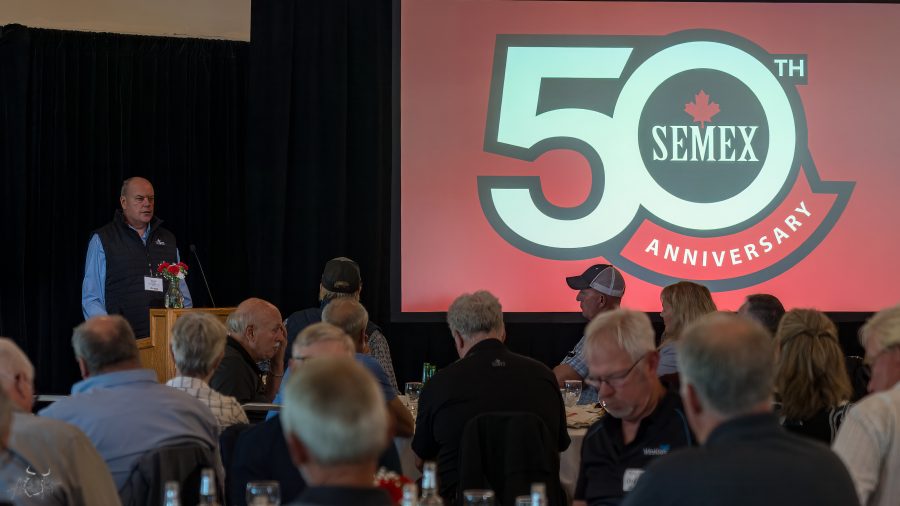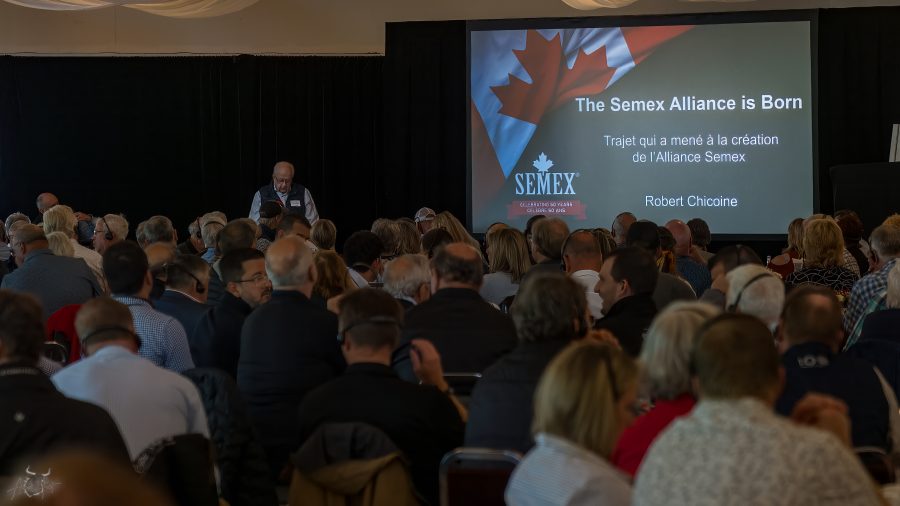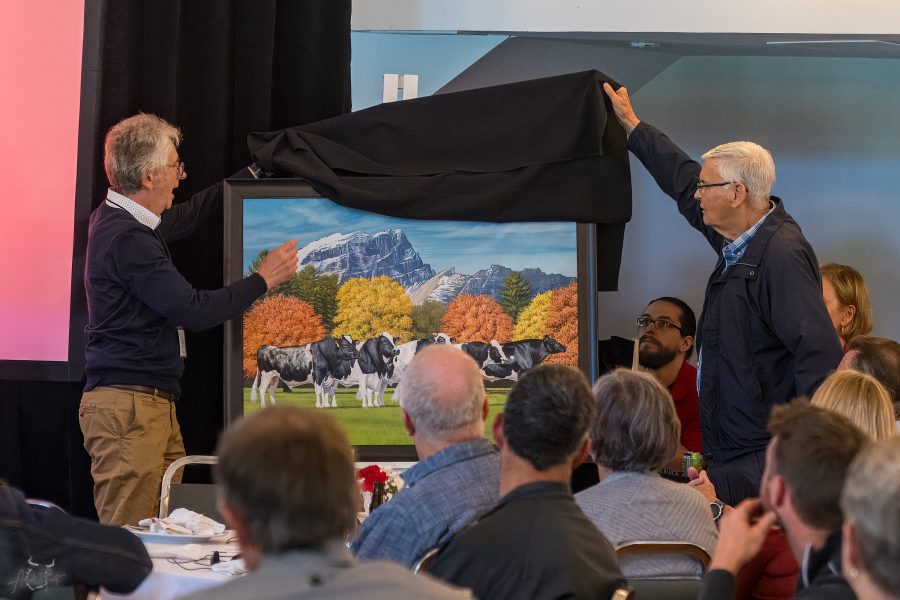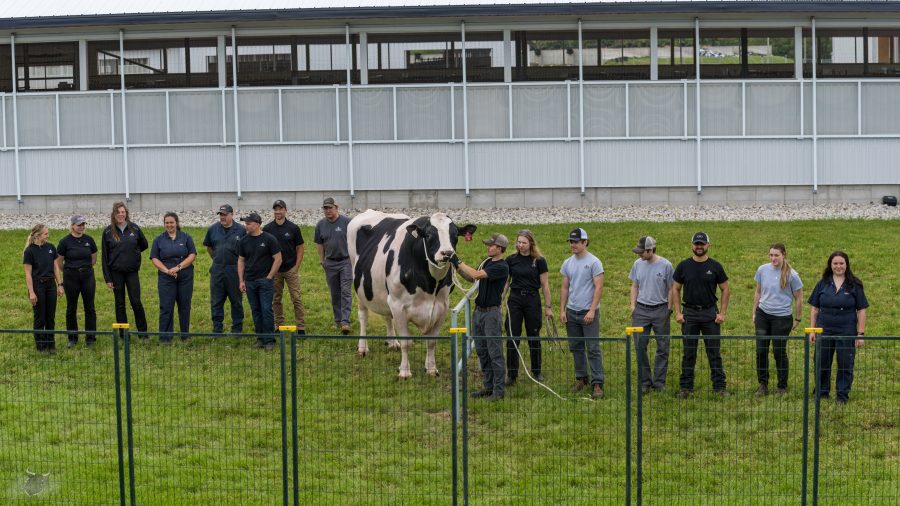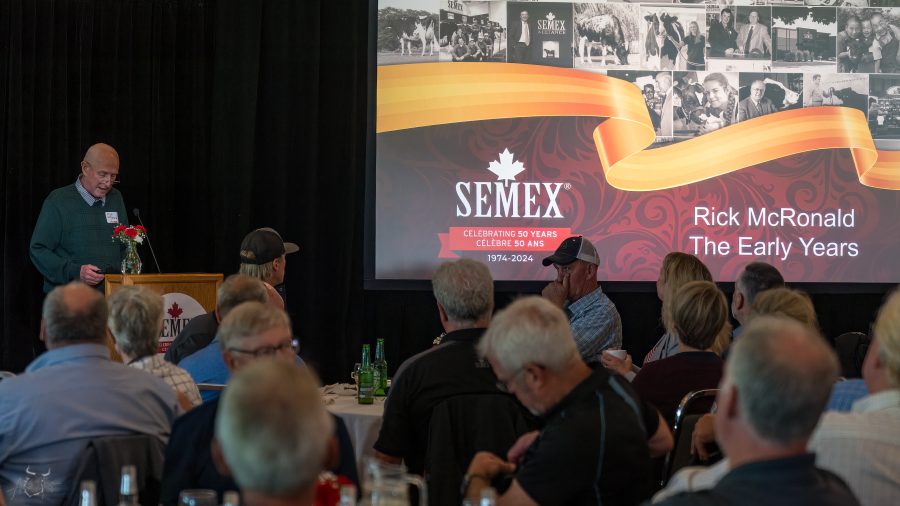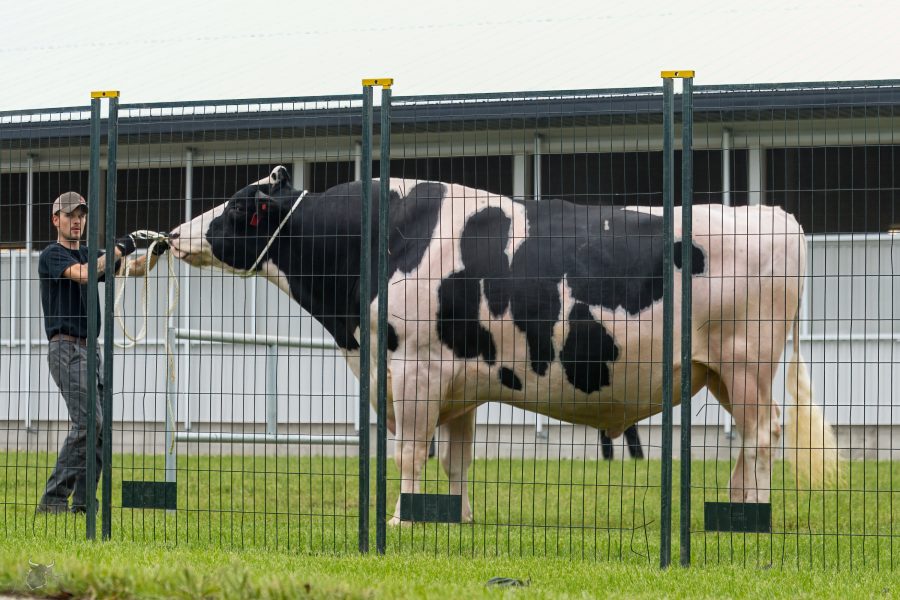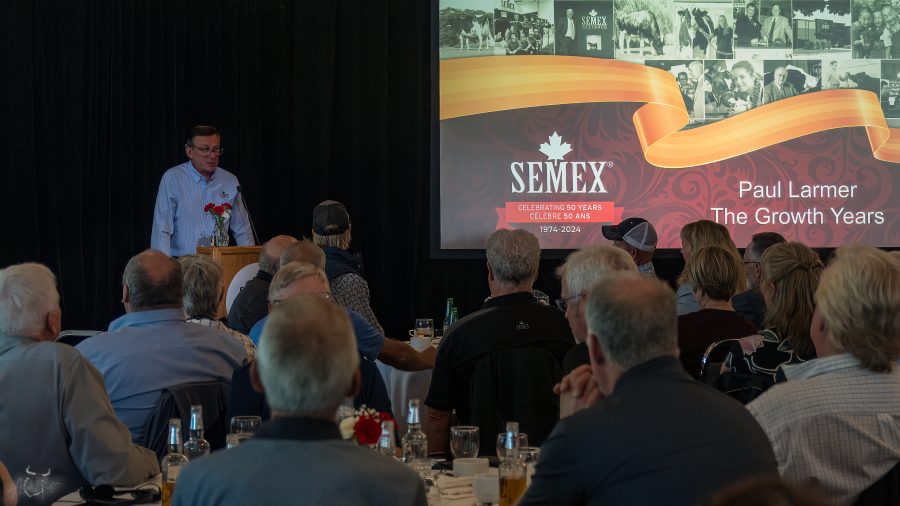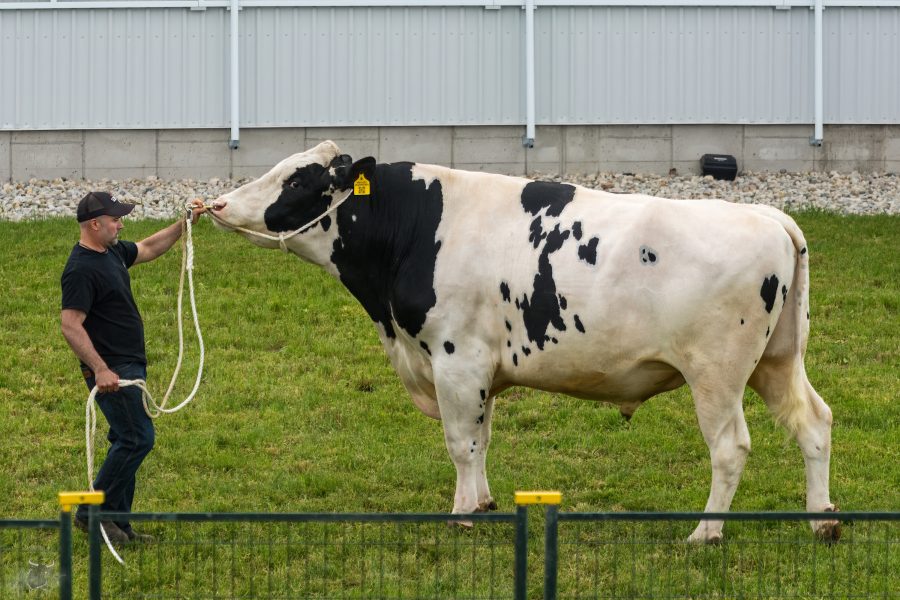Learn how Paul Larmer helped make Semex a global leader. How has his leadership affected Canadian farming? Find out more.

Celebrating his significant contributions to agriculture, Paul Larmer will be inducted into the Canadian Agricultural Hall of Fame. This esteemed prize honors those who have significantly influenced Canadian agriculture. Paul’s vision and leadership have greatly helped raise Canadian farmer-owned businesses in the worldwide cattle breeding sector. His relentless commitment guarantees that Canadian DNA is valued and sought after worldwide.
From Dairy Cattle Sire Analyst to Visionary Leader: The Formative Years of Paul Larmer
Starting as a dairy cow sire analyst, Paul Larmer’s path in cattle genetics evolved from one of a sharp eye for detail, and extensive knowledge of dairy cattle breeding to one of His subsequent contributions were shaped in great part by this function, which gave him a thorough understanding of genetic ideas and their practical applications. Paul perfected the identification of outstanding genetic features by studying sire performance and offspring outcomes. His decisive leadership, which established Canada as a global leader in cattle genetics and raised industry standards, sprang from this knowledge.
Semex Alliance: Birth of a Global Powerhouse in Cattle Genetics
The founding of the Semex Alliance signaled a turning point in the worldwide cattle breeding sector. It spurred many creative ideas that now define the organization’s unique history. Under Paul Larmer’s sharp direction,in his capacity as CEO of Gencor and a founding partner of Semex, many Canadian AI centers came together to create a powerful and coherent whole. The Semex Alliance aimed to strengthen competitive advantage, seek worldwide growth, and improve genetic offers for Canadian producers. Larmer’s vision transcended boundaries and committed efforts to improve Canada’s reputation in cattle genetics using relentless quality, sustainability, and innovation.
Transformative Leadership: Paul Larmer’s 17-Year Tenure at Semex
Paul Larmer was a remarkable 17-year Semex CEO who embodied transforming leadership distinguished by strategic understanding and commitment to excellence. Larmer encouraged creativity by prioritizing infrastructure and modern technologies, positioning Semex in a leading position in cattle genetics research. Under his direction, the business grew internationally and sold genes to more than eighty nations.
Among other strategic choices Larmer made were long-term alliances with SwissGenetics and others, which were vital for furthering genetic research and improving product variety. He also supported environmental projects, best seen by the Methane Efficiency Index’s 2023 debut in collaboration with Lactanet.
Semex, under his direction, brought 70 Holstein Premier Sire flags from the World Dairy Expo and the Royal Winter Fair. Larmer transformed herd health and welfare by including technologies like the genetic testing program Elevate, ensuring Semex’s preeminence in the world of cow breeding. His continuing influence on the business is shown by his ability to move Semex from a national organization to a worldwide cattle genetics supplier.
Under Larmer, Semex changed from selling Canadian genetics to offering complete worldwide solutions in cow genetics. This change comprised customized agricultural methods and breeding plans for many climates. Collaborating with Lactanet, Semex’s release of the Methane Efficiency Index emphasizes its dedication to sustainability and responsible genetic innovation.
Larmer’s emphasis on innovative research and development significantly improved the quality and variety of Semex’s products. Semex provides genetic answers that increase herd health, productivity, and profitability globally by using cutting-edge technologies and encouraging a culture of ongoing improvement. Semex’s genes are employed in over 80 countries today, reflecting Larmer’s innovative leadership and ongoing influence.
A Mentor and Beacon: Paul Larmer’s Enduring Legacy in Cattle Genetics
Paul Larmer’s impact goes well beyond his management responsibilities; he has become a motivating teacher in the cattle genetics field. His commitment and welcoming style have created conditions for creativity and personal development. Young professionals benefited from his coaching and were inspired to propel industry growth from the original points of view.
Larmer has taught the next generation of leaders technical innovation, ethical behavior, and sustainability first importance. Many of his protégés now hold important roles globally, thanks mainly to his mentoring of many successful careers. Larmer has strengthened Canada’s continuing reputation in cattle genetics by pushing for cooperation and technical innovation.
Rooted in Guelph: Paul Larmer’s Agricultural Journey and Semex’s Recognition
Living in Guelph, Ontario, Paul Larmer combines his farming skills personally and professionally. Semex nominated him for the Canadian Agricultural Hall of Fame based on his close ties to farming and devotion, highlighting his significant contributions to cattle genetics and Canada’s worldwide industry leadership.
The Bottom Line
From a dairy cattle sire analyzer, Paul Larmer’s career shows his development into a pioneer in worldwide cattle genetics. He was instrumental in creating the Semex Alliance, turning a Canadian company into a global powerhouse. Larmer prioritized cutting-edge technology and sustainable practices—like the Methane Efficiency Index and Immunity+- during his 17 years as CEO. Through his mentoring, Semex developed a culture of excellence that gained international acclaim and several honors. Larmer’s admission into the Canadian Agricultural Hall of Fame underlines his significant influence on the field, supporting Canada’s position in developments in cow breeding.
Other inducties include:
Dr. Bruce Coulman is an award-winning forage crop researcher who developed 24 novel forage crop varieties throughout his 40+ year professional career. Bruce’s forage breeding work shaped the future for the profitable production of forage seed and forage crops for cattle feed as a researcher at McGill University and then at Agriculture and Agri-Food Canada’s Saskatoon Research Centre. Many of his forage varieties were industry firsts including bloat-reduced alfalfa, hybrid bromegrass and smooth-awned forage barley. Dr. Bruce Coulman lives in Saskatoon, SK and was nominated by the Crop Development Centre at the University of Saskatchewan.
Dr. Michael Eskin is a trailblazing canola researcher whose work made groundbreaking contributions to the early development and refinement of canola oil. A distinguished professor at the University of Manitoba, Michael’s work helped transform the quality and stability of canola oil, expanding the market for this quintessential Canadian crop on an international scale. He also played a pivotal role in establishing canola oil as an important heart healthy addition to the Canadian diet, extending the benefits of this golden oil to include producers, the economy and consumers. Dr. Michael Eskin lives in Winnipeg, MB and was nominated by the University of Manitoba.
Dr. Charles Vincent is an internationally respected leader in agricultural entomology. A research scientist with Agriculture and Agri-Food Canada, and accomplished science communicator, Charles has spent 40 years studying insects of economic impact on Canadian food production, guided by a vision for developing sustainable agricultural systems that are commercially viable with the lowest environmental impact possible. His work, including the development of the first viral insecticide registered for use in Canada, provides practical tools that have considerably reduced the quantity of insecticides used in commercial production, including apples, grapes and blueberries. Dr. Charles Vincent lives in Saint-Lambert, QC and was nominated by Co-Lab R&D division d’Ag-Cord inc.
The 2024 induction ceremony will be held on Saturday, November 2 at the Liberty Grand in Toronto.
The Canadian Agricultural Hall of Fame Association (CAHFA) honours and celebrates Canadians for outstanding contributions to the agriculture and food industry. Portraits are on display in the Canadian Agricultural Hall of Fame Gallery located at the Royal Agricultural Winter Fair. The CAHFA also publicizes the importance of inductee achievements to Canada. The Association was organized in 1960 and is administered by a 12-person volunteer Board of Directors residing in regions across Canada.
Key Takeaways:
- Paul Larmer has been a pivotal figure in the improvement of cattle genetics and the establishment of Canada as an international leader in this field.
- From his beginnings as a dairy cattle sire analyst to his strategic oversight in forming the Semex Alliance, Larmer has shown unwavering commitment to agricultural excellence.
- During his 17-year tenure as CEO of Semex, he transitioned the company from a Canadian-centric entity to a global provider of cattle genetics solutions.
- Larmer’s mentorship has influenced many within the industry, guiding professionals who continue to uphold his high standards.
- Living in Guelph, ON, Larmer was nominated for the Canadian Agricultural Hall of Fame by Semex, underscoring his enduring impact on the sector.
Summary:
Paul Larmer, a dairy cattle sire analyst, will be inducted into the Canadian Agricultural Hall of Fame for his significant contributions to agriculture. Larmer’s vision and leadership have helped raise Canadian farmer-owned businesses in the global cattle breeding sector. His founding of the Semex Alliance marked a turning point in the industry, spurring creative ideas that now define the organization’s unique history. Under Larmer’s leadership, many Canadian AI centers united to strengthen competitive advantage, seek global growth, and improve genetic offers for Canadian producers. Larmer’s 17-year tenure at Semex led to the company growing internationally and selling genes to over 80 nations. He also became a motivating teacher in the cattle genetics field, teaching young professionals technical innovation, ethical behavior, and sustainability. His nomination for the Hall of Fame highlights his significant influence on the field and supports Canada’s position in cow breeding developments.
Learn More:
In commemorating Paul Larmer’s induction into the Canadian Agricultural Hall of Fame, it becomes imperative to understand the depth of his influence and achievements within the sphere of cattle genetics. His journey is intricately tied to the remarkable evolution of the Semex Alliance, a company that has become synonymous with excellence in global cattle genetics. For a comprehensive perspective on the origins and historical milestones of Semex, consider exploring Semex Celebrates 50 Years with Bull Parade and Tribute to Rich History.







